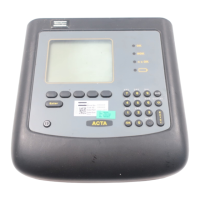ToolsTalk ACTA
159
14.4 Control charts
The most important tool when performing statistical process control is the control chart.
The basic idea of control charts is to control industrial processes by measuring one or
several parameters that indicate the quality of the process outcome.
If the process is stable, the variations will follow the normal distribution. If particular causes
of variation occur, this is reflected as a deviation from the normal distribution pattern.
Upper Control Limit
Lower Control Limit
Centre Line
Control Chart
6
Time
Value
The observations in an industrial process, e.g. measurement of dimensions or torque, are
plotted on the control chart. If one or several values fall outside the control limits, corrective
actions should be taken.
In a control chart the target value is in the middle, and on each side of this centre line are
the control limits. The control limits are usually placed at a distance of ±3σ from the target
value. With this constitution, only 0.27% of the measured values fall outside the control
limits if the process is stable.
Therefore, if one or several values fall outside the control limits, it is most probably a sign of
disturbances in the process. Trends can also be detected in a control chart. To give an
example, several marks on the same side of the centre line may indicate tool wear.
Note!
The control limits should not be mistaken for tolerance limits. The tolerance limits are based
on the feasibility of the manufactured part, while the control limits are based on the natural
variations in the manufacturing process. The control limits obviously need to be tighter than
the tolerance limits.

